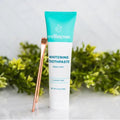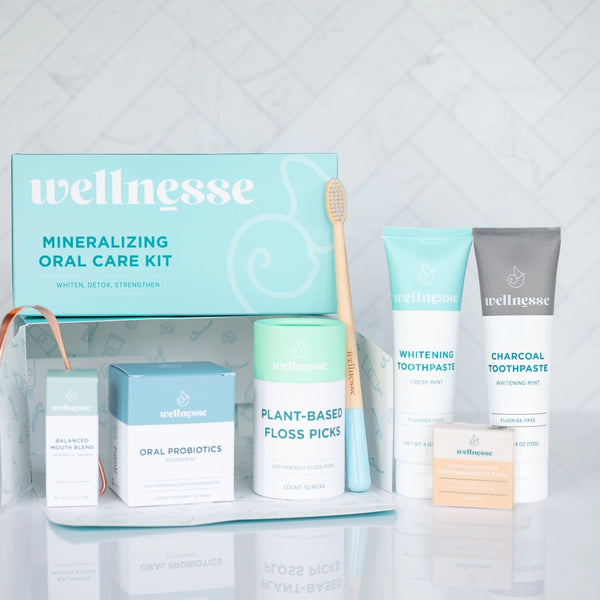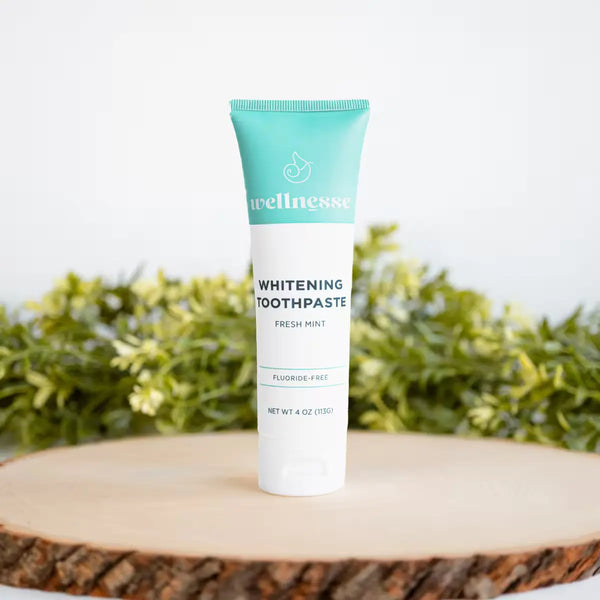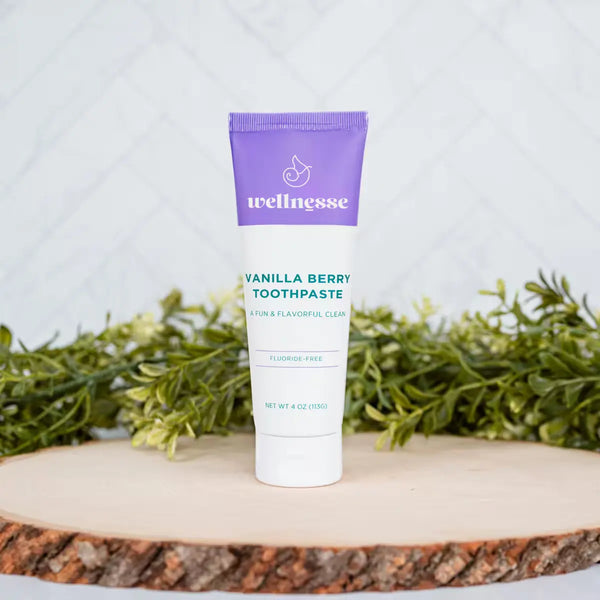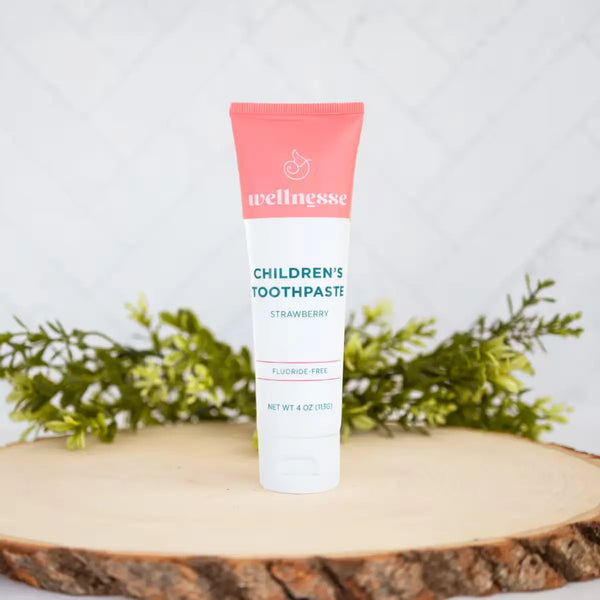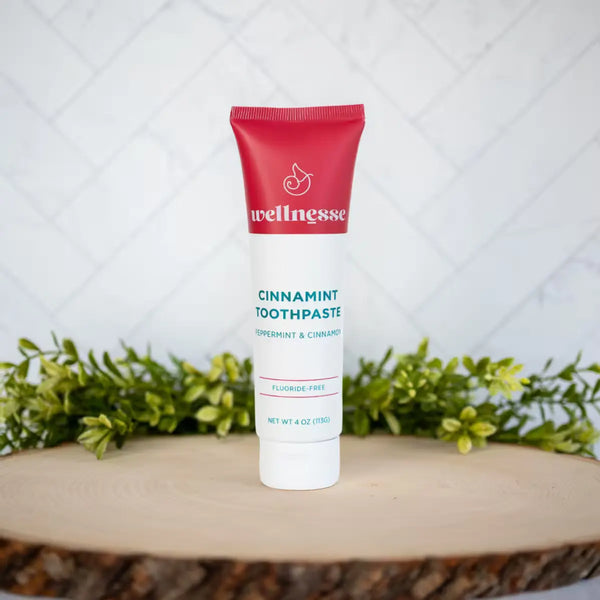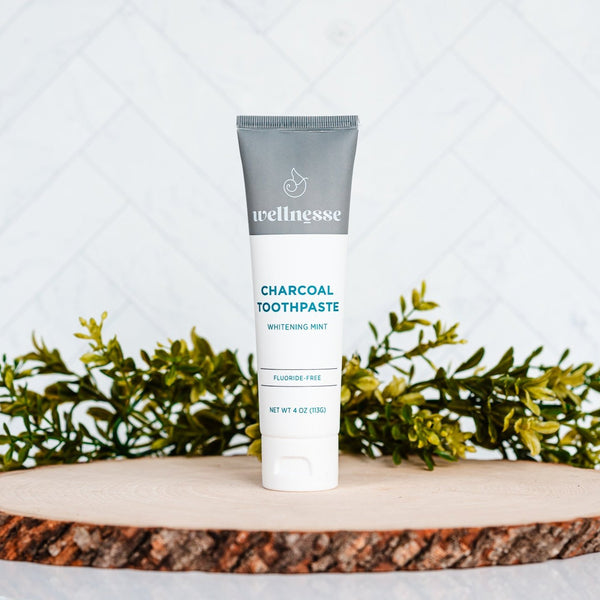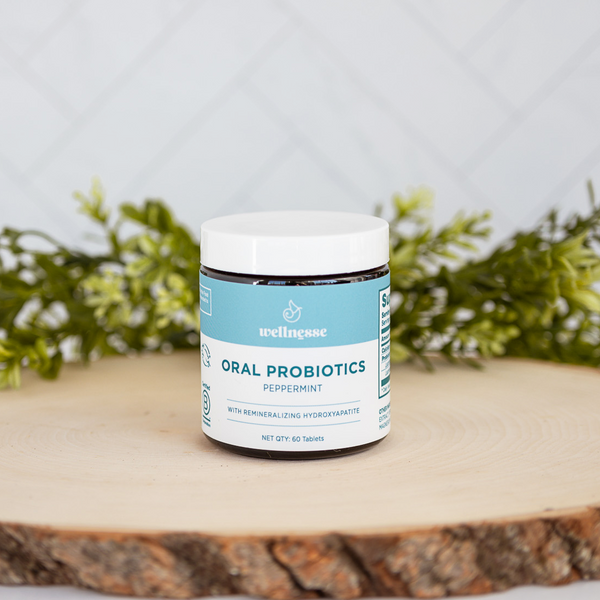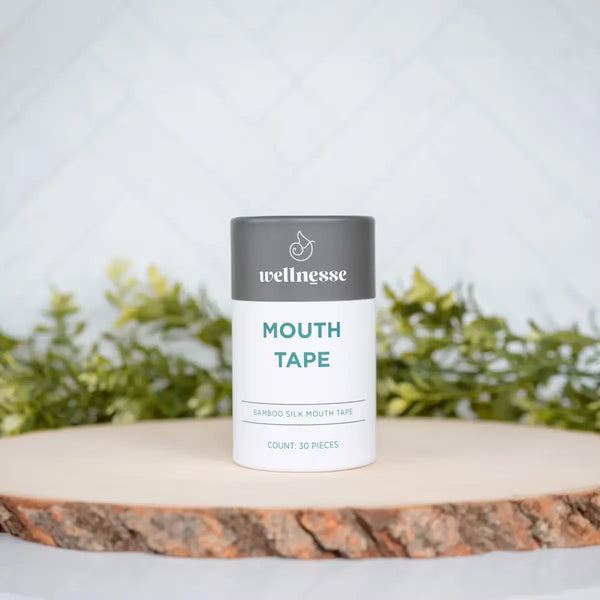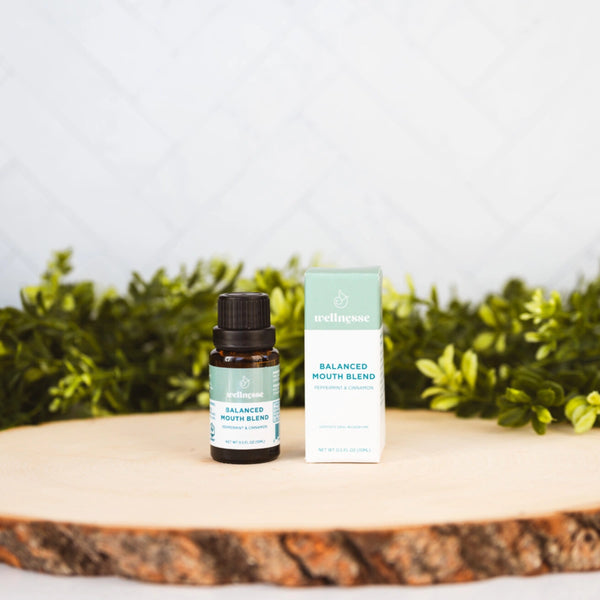More and more people are rethinking what goes into their personal care routines, especially their oral care. One of the most significant shifts has been toward fluoride-free toothpaste, with consumers seeking cleaner, more natural alternatives. While fluoride has long been used to prevent cavities, many now question its safety when overused, especially in young children. Holistic dentists are exploring gentle and effective alternatives without relying on synthetic chemicals. This change reflects a broader interest in wellness, where people want to protect their health using safer, plant-based products.

Safety and Suitability of Fluoride-Free Toothpaste: Who Should Use It and What to Consider
Generally, fluoride-free toothpaste is considered safe for most users, including children and adults, as long as it is used as directed. These products are formulated with gentle, natural ingredients designed to clean teeth and support oral health without the use of fluoride or harsh chemicals. For individuals who are particularly sensitive to synthetic additives, fluoride-free toothpaste can provide a more comfortable brushing experience, minimizing the risk of irritation or allergic reactions. This makes it a suitable choice for people with chemical sensitivities, those managing autoimmune or thyroid conditions, or anyone seeking a cleaner, plant-based oral care routine.
However, there are important caveats to consider, especially for individuals at a higher risk of dental issues. Dentists commonly agree that while fluoride-free toothpaste is safe for general use. Fluoride is well-known for its ability to remineralize enamel and protect against cavities, which is particularly important for people with a history of frequent cavities, weakened enamel, dry mouth, or those undergoing certain medical treatments. For these groups, the absence of fluoride may increase the risk of tooth decay if other preventive measures are not taken. As such, it’s wise for high-risk individuals to consult with their dental professional before making the switch and to ensure they maintain regular dental checkups and a thorough oral hygiene routine. Many natural formulas include ingredients like nano-hydroxyapatite, calcium carbonate, or potassium nitrate, which help to remineralize enamel and reduce sensitivity without the use of fluoride. These ingredients gently soothe sensitive areas, rebuild the protective layer of the teeth, and provide relief from discomfort triggered by hot, cold, or sweet foods. It’s important to choose a product formulated specifically for sensitivity if this is a concern. Look for labels indicating suitability for sensitive teeth and check for remineralizing agents that have been clinically studied. While fluoride-free toothpaste can be an effective and gentle alternative, especially for those with sensitivities, individuals with ongoing or severe dental problems should work closely with their dentist to ensure their oral care routine provides adequate protection and relief.
What Makes a Toothpaste Without Fluoride Unique
Conventional vs. Fluoride-Free Toothpaste Formulas
Traditional toothpastes often contain synthetic compounds like fluoride, sodium lauryl sulfate (SLS), and artificial sweeteners. These ingredients prevent cavities, create foam, and improve taste. However, they may also irritate sensitive mouths or cause concerns about long-term exposure. In contrast, non-fluoride toothpaste features formulas centered on mineral-rich and botanical ingredients that work with your body, rather than against it. Natural pastes clean gently, reduce plaque, and freshen breath without harsh additives. This formulation shift caters to sensitive users and aligns with cleaner living practices that many households are adopting.
The Role of Hydroxyapatite and Calcium-Based Cleansers
Hydroxyapatite is a mineral that makes up much of our natural tooth enamel, and it’s becoming a popular replacement for fluoride. In toothpaste with safe ingredients, hydroxyapatite can help rebuild enamel, reduce sensitivity, and protect teeth from daily wear. Other calcium-based cleansers gently polish teeth while preserving enamel integrity. Such ingredients provide a natural way to support oral health.
Evaluating Safety, Efficacy, and Flavor
One reason people hesitate to switch to no-fluoride toothpaste is concern about taste, texture, and performance. However, today’s options are far more advanced than older formulas. They come in pleasant flavors like mint, cinnamon, and herbal blends. Most importantly, these pastes have been shown to reduce plaque and support oral hygiene without synthetic ingredients. For individuals sensitive to foaming agents or artificial dyes, these natural alternatives offer a soothing experience.
Who Benefits Most from Fluoride-Free Options
Young children may accidentally swallow toothpaste while brushing. Choosing a safe toothpaste for kids reduces the risk of ingesting too much fluoride, which could lead to dental fluorosis. Adults with thyroid concerns, chemical sensitivities, or compromised immune systems might also prefer gentler formulas. These alternatives provide a way to maintain strong oral health using ingredients that align with their values and lifestyle preferences.
Usage Guidelines for Fluoride-Free Toothpaste
For optimal oral hygiene, fluoride-free toothpaste should be used with the same consistency and care as conventional toothpaste—ideally, twice a day, once in the morning and once before bed. Brushing after meals can be beneficial, especially if you've consumed sugary or acidic foods, but twice daily is the minimum recommended frequency to remove plaque and prevent buildup effectively. Consistency is especially important with fluoride-free formulas, as these products rely on mechanical cleaning and alternative remineralizing agents, rather than fluoride’s chemical protection, to maintain oral health.
When using fluoride-free toothpaste, the brushing technique and duration remain crucial. Dentists recommend brushing for at least two minutes per session to ensure that all tooth surfaces are thoroughly cleaned. Use a pea-sized amount of toothpaste for adults, which is sufficient to provide coverage without waste. For children, especially those under six, a smaller, rice-grain-sized amount is advised. Since fluoride-free formulas are often marketed as safe to swallow in small quantities, they can be a practical choice for young children who may not have mastered spitting out toothpaste. However, it’s still important to supervise children while brushing to encourage good habits and prevent excessive ingestion of any toothpaste, regardless of its ingredients. Unlike some traditional toothpastes that use strong foaming agents or artificial flavors to create a sense of cleanliness, fluoride-free options may produce less foam and have milder, more natural flavors. This difference does not affect their cleaning ability but may require a short adjustment period for users accustomed to conventional products.
Other Benefits
One of the most compelling reasons people are turning to fluoride-free toothpaste is its alignment with ethical and sustainable lifestyles. Many natural toothpaste brands are not only free from fluoride but also proudly vegan and cruelty-free, which means they contain no animal-derived ingredients and are never tested on animals. This is a significant benefit for consumers who are committed to making compassionate choices, ensuring their daily oral care routine supports animal welfare and environmental stewardship. By choosing vegan and cruelty-free toothpaste, you can feel confident that your oral health regimen aligns with your values, avoiding ingredients like glycerin sourced from animals or additives that have been tested on animals. Instead, plant-based alternatives and botanical extracts are used to deliver effective cleaning and freshening power, without compromising on performance or ethics.
Another key benefit of many fluoride-free toothpastes is their focus on non-abrasive cleaning. Traditional whitening toothpastes often rely on harsh abrasives or strong chemicals to remove stains, which can wear down enamel and cause sensitivity over time. In contrast, vegan and cruelty-free fluoride-free options typically use gentle mineral cleansers, such as hydrated silica or calcium carbonate. These ingredients polish away surface stains and plaque without scratching or damaging tooth enamel, making them a safer choice for those with sensitive teeth or anyone seeking a gentler approach to whitening. This non-abrasive formula ensures that you can maintain a bright, clean smile without risking your enamel’s health, and is especially beneficial for daily use.
Sustainability is another area where fluoride-free toothpaste stands out. Many brands are rethinking packaging to reduce plastic waste and minimize their environmental footprint. Instead of single-use plastic tubes, you’ll find options packaged in recyclable aluminum tubes, refillable glass jars, or compostable containers. These innovations not only cut down on landfill waste but also encourage a more mindful approach to consumption. Choosing a toothpaste with eco-friendly packaging is a simple yet effective way to support the planet while caring for your teeth. Some brands also go a step further by using biodegradable formulas and supporting environmental initiatives, making it easier for consumers to make responsible choices.
Functional Varieties of Fluoride-Free Toothpaste
Whitening Toothpaste Without Fluoride
Instead of relying on synthetic ingredients, these toothpastes use natural elements to whiten teeth. Each ingredient works in a unique way, contributing to stain removal, plaque reduction, or detoxification. Below are common ingredients:
-
Activated Charcoal: This ingredient is a standout in many fluoride-free whitening toothpastes due to its porous structure and strong adsorption capabilities. Derived from natural sources like coconut shells or hardwood, activated charcoal binds to surface stains from coffee, wine, and tobacco, lifting them from the enamel over time. It also helps reduce odor-causing bacteria, making the mouth cleaner and fresher. Unlike chemical whiteners that may cause sensitivity, charcoal works through physical absorption rather than chemical bleaching. When used sparingly and with a soft-bristle brush, it can provide gradual whitening without damaging enamel. For best results, users should alternate with a gentler paste or consult a dentist to ensure proper use. Activated charcoal’s black color may seem surprising, but many users report visibly brighter teeth after consistent use over several weeks.
-
Bentonite Clay: Known for its detoxifying and soothing properties, it is another popular ingredient in fluoride-free toothpaste. This naturally occurring clay forms when volcanic ash ages and is rich in minerals like calcium and magnesium. In oral care, bentonite clay acts as a gentle abrasive that helps scrub away plaque and stains while absorbing bacteria, toxins, and impurities from the mouth. Unlike harsher abrasives, it is soft enough for daily use and especially helpful for sensitive teeth or gums. It can also help balance the mouth’s pH, which supports a healthier oral environment. Some formulas include bentonite clay for its thick, paste-like texture that mimics the feel of traditional toothpaste without added synthetics.
-
Hydrated Silica: A mineral derived from sand, hydrated silica is commonly used as a polishing agent in fluoride-free whitening toothpaste. It gently buffs away surface stains and helps remove plaque without scratching the enamel. Because of its smooth texture and low abrasiveness, it’s safe for everyday use and ideal for maintaining a clean, polished look over time. Hydrated silica also enhances the consistency of toothpaste, making it easier to spread evenly across teeth during brushing. In whitening formulas, it plays a key role by physically lifting buildup and debris from the tooth surface, making teeth appear naturally brighter with regular use.
Whether you switch for health reasons or personal preference, natural whitening toothpaste offers a practical and refreshing alternative.

Natural Toothpaste for Adults
Adult users often prioritize two things in toothpaste: fresh breath and enamel protection. Strong mint oils help control odor-causing bacteria and leave the mouth feeling fresh, and as mentioned, hydroxyapatite or calcium compounds help strengthen teeth over time. They’re also great for individuals with dry mouth or sensitivity, offering a gentle clean without sacrificing effectiveness. It's a practical solution that doesn’t cut corners on quality or performance.
Key Ingredients in the Best Fluoride-Free Toothpaste
Gentle Abrasives
Fluoride-free formulas use mild abrasives to clean teeth effectively without damaging enamel. These ingredients help remove plaque and stains while keeping your smile smooth and polished. Toothpaste with safe ingredients like calcium carbonate is less abrasive than traditional whitening pastes. Calcium carbonate comes from natural mineral sources and is ideal for daily cleaning. Baking soda adds gentle whitening power and balances pH levels in the mouth. Together, these ingredients help maintain clean teeth while protecting the structure of enamel from erosion.
Herbal Actives
Plant-based ingredients bring powerful benefits to natural oral care. Herbal toothpaste for gums often includes herbs like:
-
Neem Leaf Extract: Neem is a well-known Ayurvedic medicine herb prized for its antimicrobial and anti-inflammatory qualities. Neem leaf extract helps control plaque by reducing the buildup of harmful bacteria that cling to teeth and gums. The active compounds are effective against the bacteria that cause gingivitis and other gum issues. This also promotes better breath by minimizing odor-producing bacteria in the mouth. It has a slightly bitter taste, but when combined with mint or other herbs, it becomes more palatable. Using neem in toothpaste or mouthwash can lead to fewer gum infections and reduced swelling over time.
-
Myrrh Resin: In toothpaste for gum health, myrrh acts as a soothing agent for swollen or bleeding gums. It supports tissue repair and offers mild antiseptic benefits, making it especially useful for those experiencing gum sensitivity or early signs of infection. Myrrh can also help reduce the risk of ulcers or inflammation by creating a protective coating over irritated areas. Its earthy, slightly medicinal scent is balanced with other herbs like mint or cinnamon.
-
Sage Leaf: Sage has natural astringent properties that help tighten gum tissues and minimize irritation. It’s also known for its substantial antioxidant benefits, which help reduce free radical damage in the mouth. In herbal toothpaste, sage promotes a clean and refreshed feeling while working to ease minor discomfort caused by swollen gums. Its antimicrobial effects target bacteria that contribute to gum disease and plaque buildup. Sage also provides a naturally invigorating flavor, often paired with mint for a balanced and pleasant brushing experience.
-
Tea Tree Oil: Derived from the Melaleuca plant, tea tree oil is a powerful antiseptic with a long history of medicinal use. In oral care, it helps control bacteria responsible for gum infections, plaque, and bad breath. Its deep-cleansing action reaches into crevices along the gumline, reducing inflammation and promoting a fresher mouthfeel. Although potent, tea tree oil must be diluted to avoid irritation. It is often combined with gentle carriers like aloe or coconut oil in toothpaste to temper its intensity. Tea tree oil’s refreshing scent and taste contribute to a clean finish after brushing. Regular use can help maintain gum health and prevent recurring oral issues.
-
Chamomile: Its gentle action reduces redness and discomfort, particularly in delicate areas of the mouth. It also has mild antimicrobial properties that support a healthier oral environment without disrupting the natural flora. Chamomile-infused toothpaste or mouth rinses are beneficial for people undergoing dental treatments or dealing with early-stage gum conditions. It pairs well with other herbal ingredients and provides a soothing floral note to the product’s overall taste profile. Regular use can lead to noticeably calmer, less inflamed gum tissue.
-
Licorice Root: Licorice root offers antimicrobial support while helping to balance the mouth’s natural microbiome. Glycyrrhizin, a compound found in licorice, contributes to its healing properties. Consistent use of licorice root can contribute to a healthier and more balanced oral ecosystem.
-
Aloe Vera: This is a soothing plant extract often used in skincare, but its benefits also extend to oral care. It hydrates soft tissues, calms irritation, and supports recovery from inflammation or mild injury. Aloe vera forms a protective layer over gums in toothpaste while delivering anti-inflammatory and antibacterial effects. This helps reduce tenderness and promotes tissue regeneration. It’s a favored ingredient for individuals with sensitive mouths or those recovering from dental procedures. Aloe’s mild flavor also blends well with mint and other botanicals, making it a versatile choice in gentle oral formulas.
-
Clove Oil: Known for its mild numbing effects, clove oil has been used in dental care for centuries to ease discomfort. This contains eugenol, a natural compound with analgesic and antibacterial properties. Clove oil is beneficial for soothing sore gums, calming tooth pain, and reducing inflammation in targeted areas. It’s often used in small amounts due to its strong flavor and potency. In herbal oral care, clove oil can be found in toothpaste or mouth rinses designed for relief and protection.
By tapping into centuries-old remedies, modern formulas can soothe, protect, and restore oral health in a gentle way.
Avoiding SLS and Artificial Additives
People with sensitive teeth or gums often react poorly to artificial foaming agents. That’s why many natural toothpastes are now made as SLS-free toothpaste options. Sodium lauryl sulfate, or SLS, is a detergent used to create foam, but it can also irritate tissues. Removing it from toothpaste makes brushing more comfortable, especially for those prone to canker sores or dry mouth. Instead of SLS, natural formulas may use coconut-derived cleansers or no foaming agents. Simple swaps enhance comfort and minimize reactions without compromising cleanliness or flavor.
Building a Fluoride-Free Oral Care Routine
Daily Habits
Switching to non-toxic oral care goes beyond choosing a better toothpaste. It also means creating daily habits that keep your mouth healthy without harsh chemicals. Brushing twice a day with a gentle, natural formula helps clean your teeth and protect your gums. Flossing removes food between teeth where a brush can’t reach. A holistic oral care routine involves consistent hydration and intentional food choices. Drinking plenty of water throughout the day stimulates saliva production, naturally neutralizing acids and rinsing away bacteria. Eating a diet rich in fibrous fruits and vegetables, like apples, carrots, and celery, supports overall nutrition and acts as a natural toothbrush, gently scrubbing tooth surfaces as you chew.
Choosing Tools
A soft-bristled brush is ideal for daily cleaning because it removes plaque gently without scratching enamel. Firm brushes may feel stronger, but they can wear down enamel and irritate your gums over time. Tongue scrapers help remove bacteria and buildup that cause bad breath. This tool is simple and adds just a few seconds to your routine. Water flossers can also be a great addition. They use a gentle stream of water to flush out debris between teeth and below the gumline, which is ideal for people with braces.
Professional Care
Even with a consistent routine, visiting a dentist regularly is important. A professional can help you evaluate how well your natural routine is working and suggest any changes needed. While switching to fluoride-free toothpaste brands is a personal choice, dental checkups are still necessary to monitor overall health. If you experience bleeding gums, chronic bad breath, or tooth sensitivity, don’t wait to get help. Natural care works best with expert guidance and routine cleanings to keep your smile at its healthiest.
Shopping Smart for Natural Toothpaste
Eco-Friendly Packaging
The packaging of your toothpaste can be just as important as what’s inside. Instead of traditional plastic tubes, you might find glass jars with metal lids or recyclable aluminum tubes. These packaging choices help you support both your health and the planet. You’re making a small but meaningful contribution to a more sustainable lifestyle when you choose toothpaste in eco-friendly containers.

Budgeting Tips
Natural products sometimes come with a higher price tag, but there are ways to make them more affordable. Comparing the price per ounce can help you buy natural toothpaste that fits your budget. Many online shops offer bundle deals that reduce costs when buying multiple tubes. With a bit of planning, clean oral care doesn’t have to cost a fortune.
Consistency is the key to results, and when you choose nonfluoride toothpaste, you’re investing in the long-term health of your mouth. Natural toothpastes may take time to show visible effects, but their benefits build steadily with regular use. Safe ingredients work with your body’s natural defenses, supporting enamel, reducing inflammation, and protecting against daily wear. Whether caring for sensitive gums or aiming to avoid irritants, non-toxic options can be just as effective as conventional ones.
